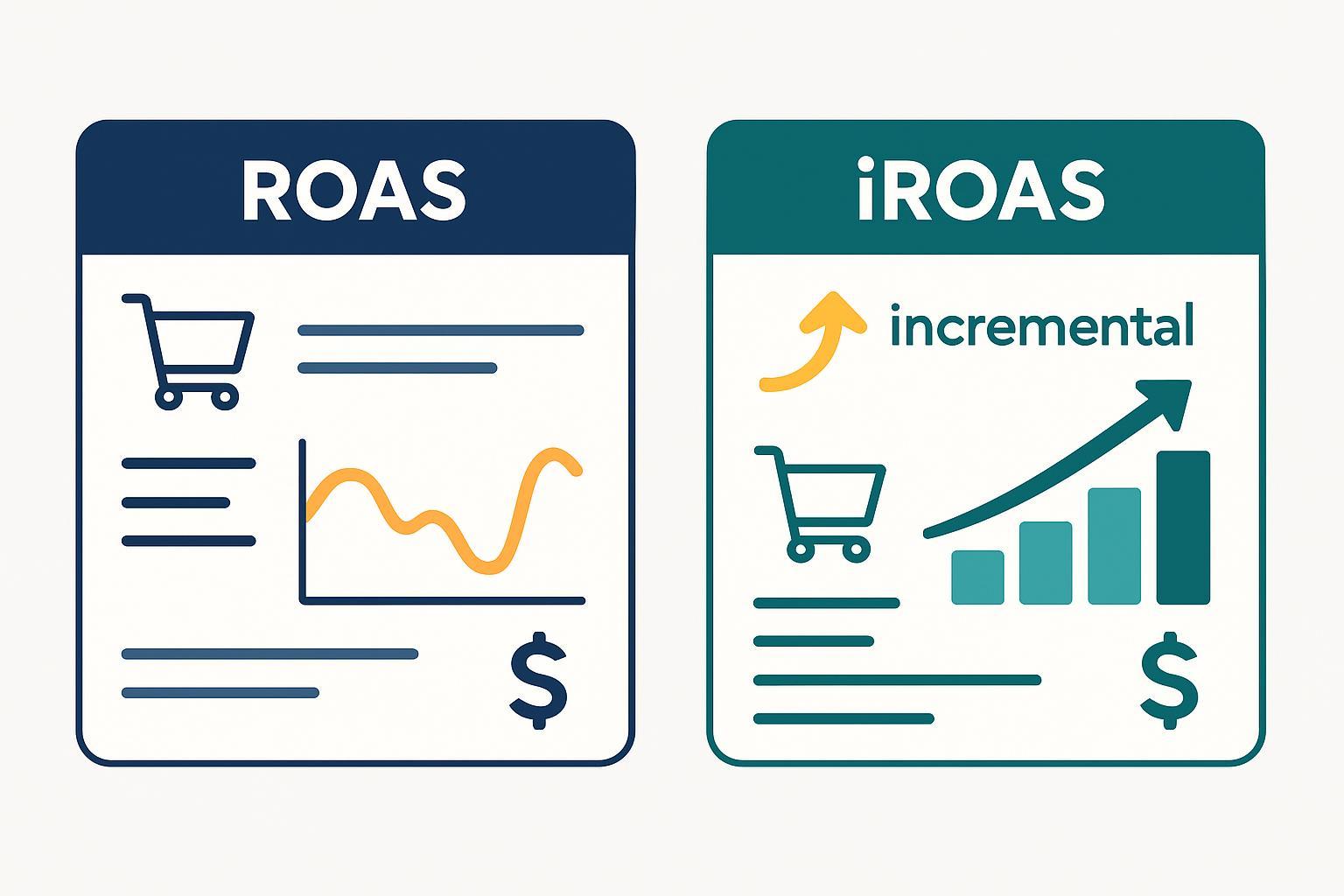Understanding the Key Differences Between iROAS and ROAS

Introduction: Why Measurement Depth Matters in E-Commerce
Digital ad spend is one of the largest investments for e-commerce brands, but not all revenue attributed to ads is created equal. Relying solely on surface-level metrics can inflate the perceived impact of your campaigns—leading to wasted budget and missed growth opportunities. To win in today’s data-driven landscape, marketers need to go beyond traditional Return on Ad Spend (ROAS) and embrace advanced metrics like incremental Return on Ad Spend (iROAS).
What is ROAS?
ROAS (Return on Ad Spend) quantifies how much revenue is generated for every dollar spent on advertising. It is calculated as:
ROAS = Total Revenue from Ads / Total Ad Spend
For example, a ROAS of 4.0 means every $1 spent brought $4 in tracked sales. However, ROAS attributes all sales to ads—overlooking whether those conversions might have happened organically or through other channels. (Source: Triple Whale)
What is iROAS?
iROAS (Incremental Return on Ad Spend) digs deeper. It measures the additional revenue generated that would not have occurred without the ad campaign. In other words, iROAS isolates the genuine lift—or incrementality—attributable to advertising. The formula:
iROAS = Incremental Revenue / Total Ad Spend
To find incremental revenue, marketers use experiments (such as holdout groups) or advanced modeling to estimate what sales would have been without the ad exposure. (Source: Skai)
ROAS vs iROAS: Quick Comparison Table
| Feature | ROAS | iROAS |
|---|---|---|
| What It Measures | Total revenue from ads | Incremental revenue caused by ads |
| Calculation | Tracked Ad Revenue / Ad Spend | Incremental Revenue / Ad Spend |
| Data Needed | Ad platform tracking | Controlled experiments or models |
| Pros | Fast, universal, easy to interpret | Accurately measures true campaign lift |
| Cons | May overstate true value (includes organic/concurrent sales) | Needs sophisticated setup, more data |
| Best Use Case | Day-to-day optimization, quick efficiency checks | Channel validation, budget reallocation, identifying cannibalization |
Why Incrementality and iROAS Matter
ROAS is simple to use, but can be misleading—especially for well-known brands or when running cross-channel campaigns. You might see a high ROAS, only to realize those shoppers would have purchased anyway.
iROAS highlights only the real additional value your ads create: If a channel delivers high ROAS but low iROAS, you could be cannibalizing organic or repeat business, overspending without real growth.
Attribuly in Action: Practical Scenario for E-Commerce
Imagine a Shopify merchant using Attribuly, an advanced e-commerce attribution platform. Initially, their Google Ads report a strong ROAS, so they allocate more budget to that channel. However, using Attribuly’s incremental analytics, they discover iROAS for Google Ads is much lower—many buyers would have purchased from organic search regardless.
Thanks to Attribuly’s multi-touch attribution, server-side tracking, and incrementality measurement, the merchant shifts budget towards Meta and TikTok campaigns, which show both high ROAS and high iROAS. Attribution clarity means true growth, not just inflated numbers. Attribuly’s dashboards and AI analytics assistant let them see these insights in real-time, informing smarter, more profitable decisions.
Related Concepts
- Multi-touch Attribution: Understand how each touchpoint contributes to the buyer’s journey (learn more).
- Media Mix Modeling: Statistical modeling for channel impact at scale.
- Incrementality Measurement: Experimental techniques (holdouts) to reveal true ad impact.
- CAC, CPA, ROI: Broader profitability metrics; iROAS helps validate them.
Conclusion: How to Decide—and What’s Next
- Use ROAS for fast, operational campaign tuning—but always validate with iROAS when optimizing budgets or testing new channels.
- iROAS is essential for separating superficial ad influence from true business growth.
- Platforms like Attribuly empower e-commerce teams to measure the real value of every dollar spent and confidently invest where it makes a difference.
Ready to uncover your true incremental growth? Discover Attribuly’s advanced attribution for e-commerce.
